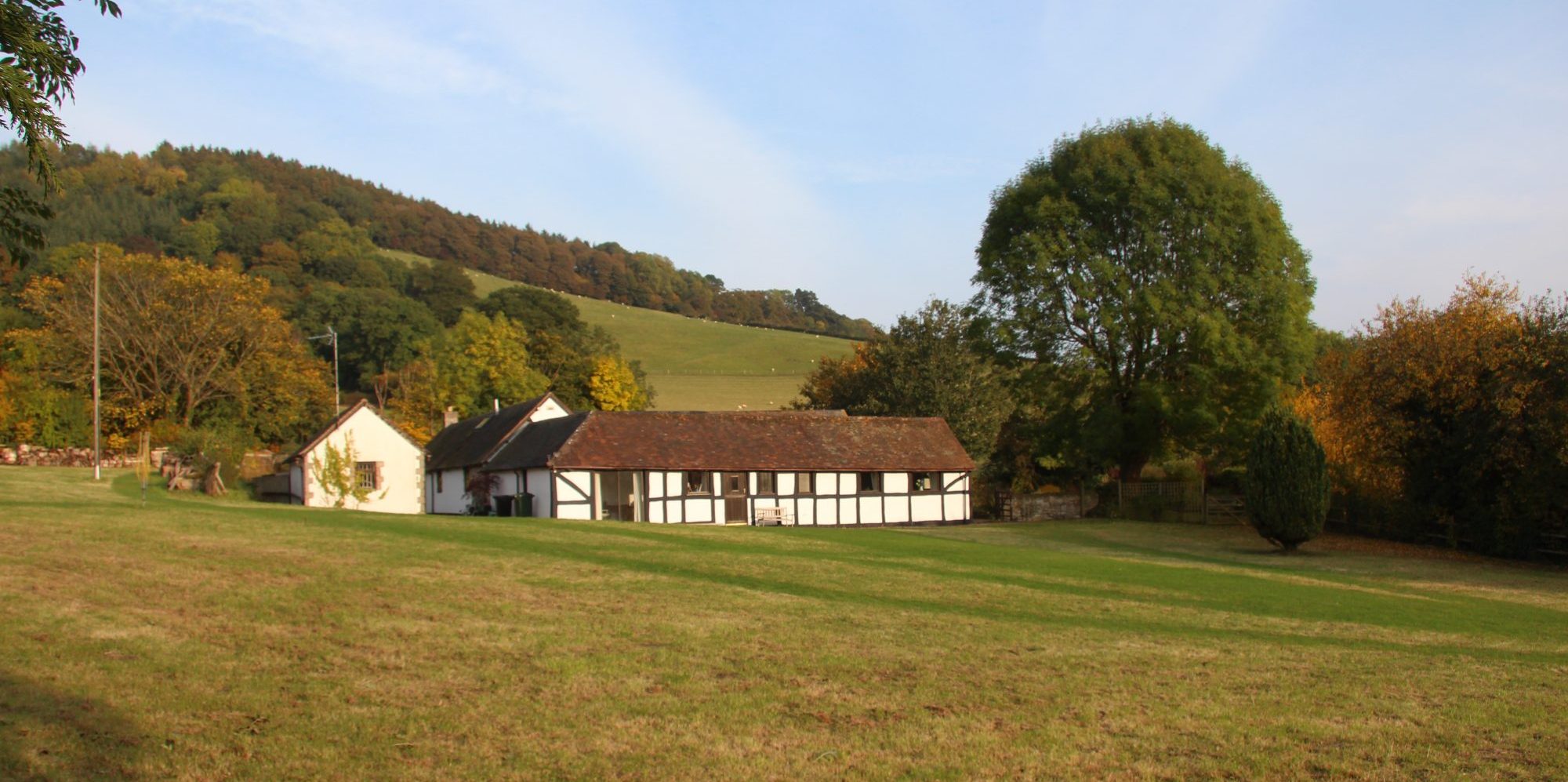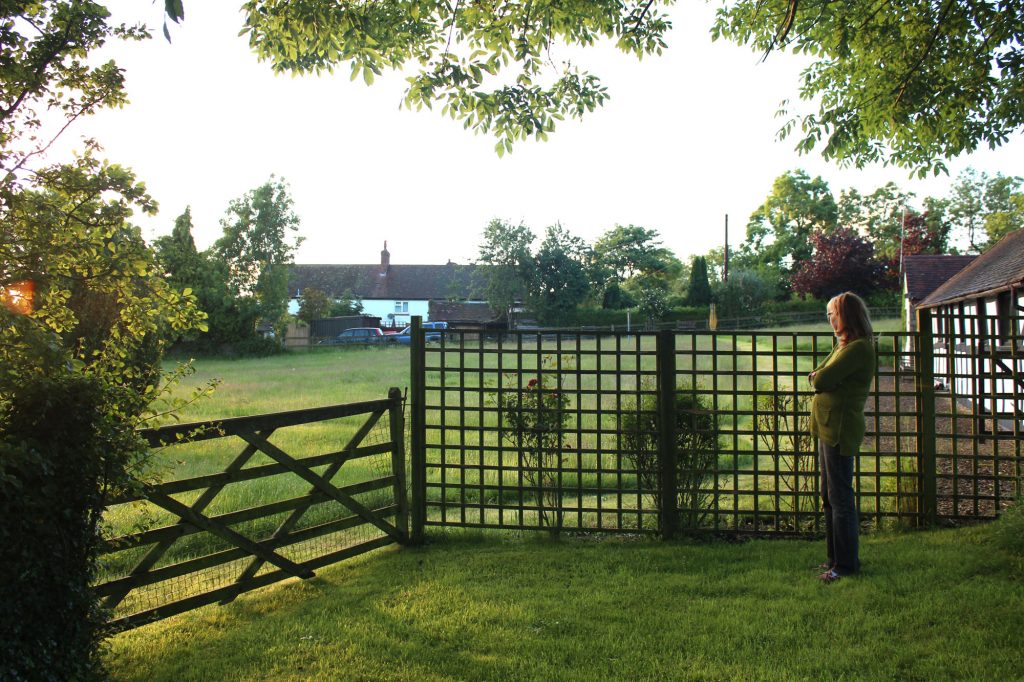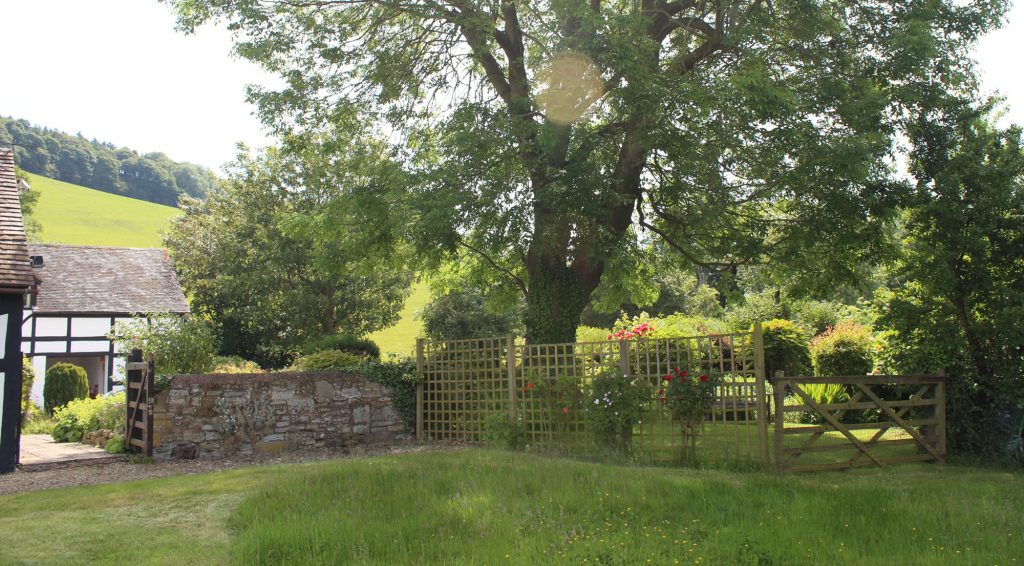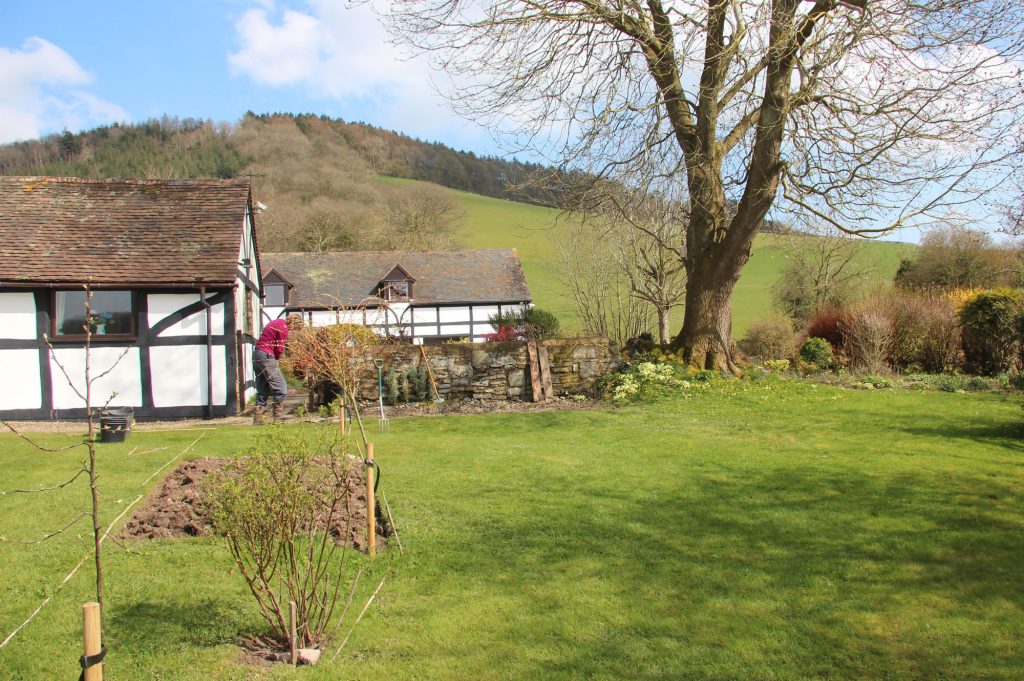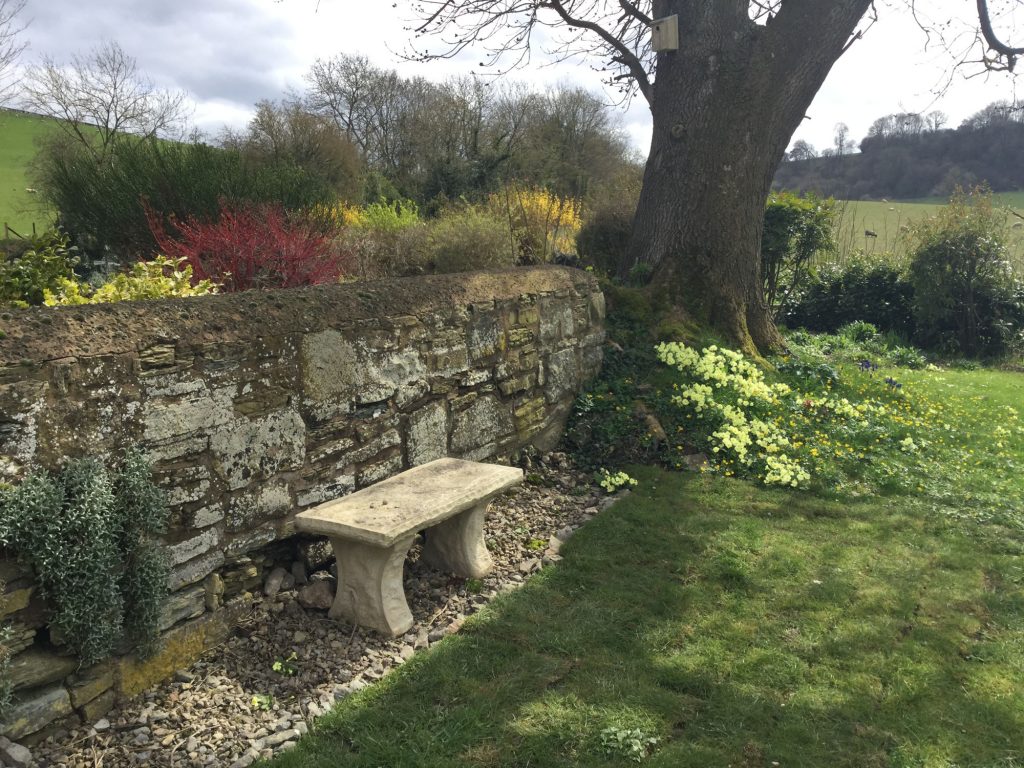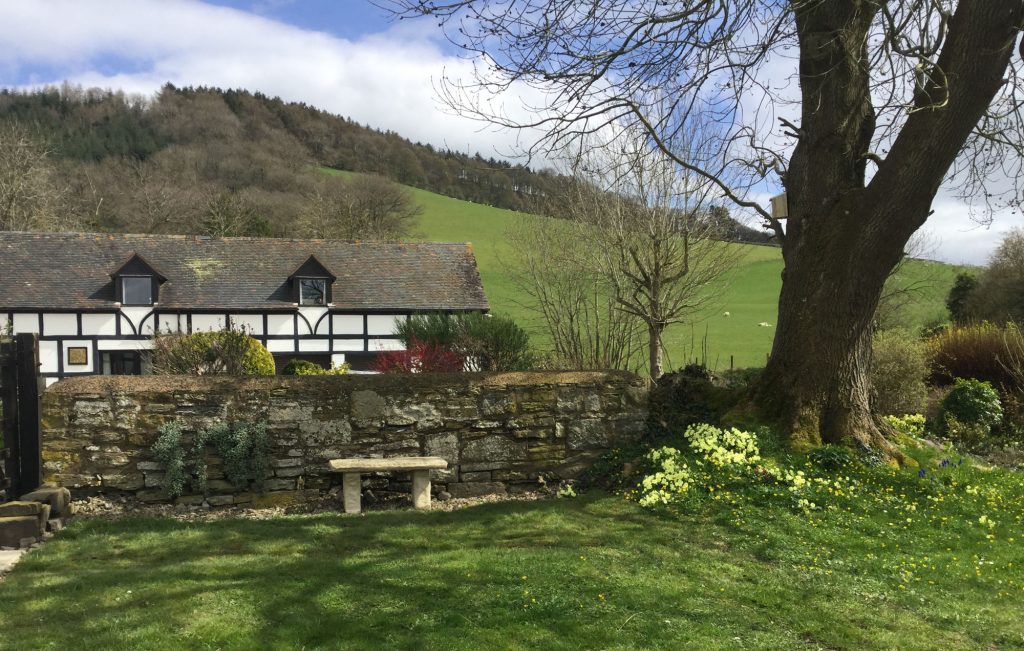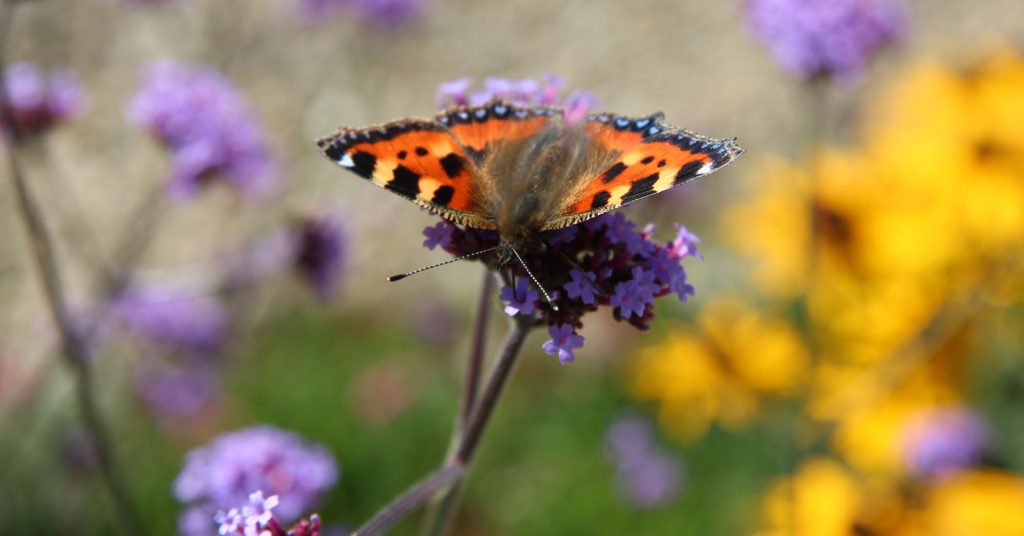
We have seen quite a bit of wildlife in our Shropshire garden. The previous owners left a large bird feeder and a stack of birdseed which we have continued to put out, so we see a good range of garden birds and last summer we saw a pleasing range of butterflies, which I hope my planting will encourage.
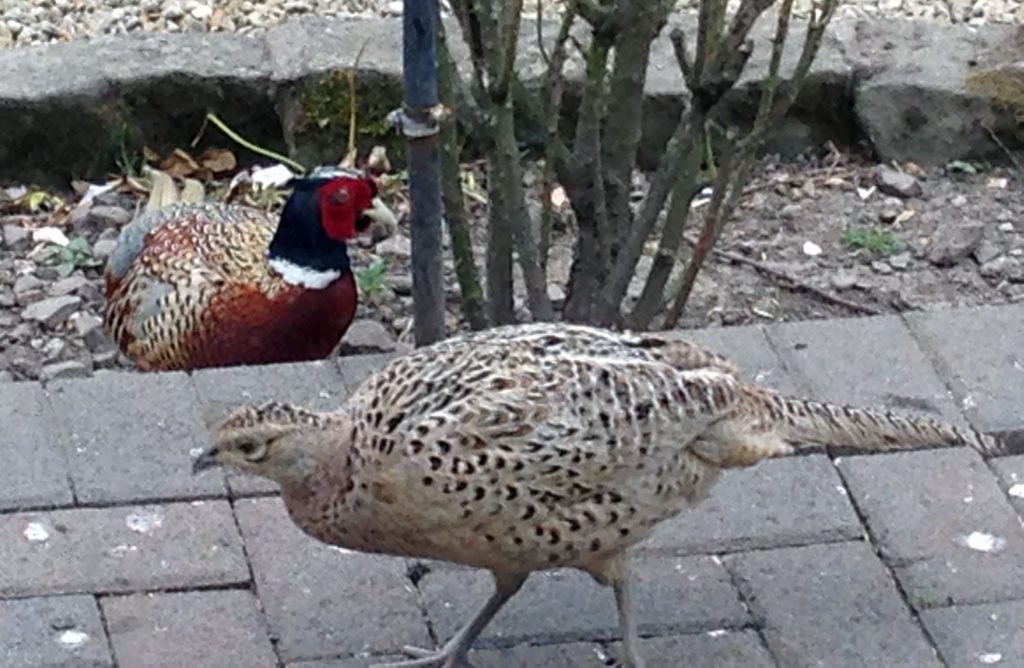
Pheasants and (once) red-legged partridges come to peck at the spilt seed along with the ubiquitous wood pigeons. Grey squirrels, of course, hang on the feeders devouring much of the bird seed whilst sparrows, tits and robins wait patiently. Sparrowhawks are often seen, but fortunately mostly leave empty handed.
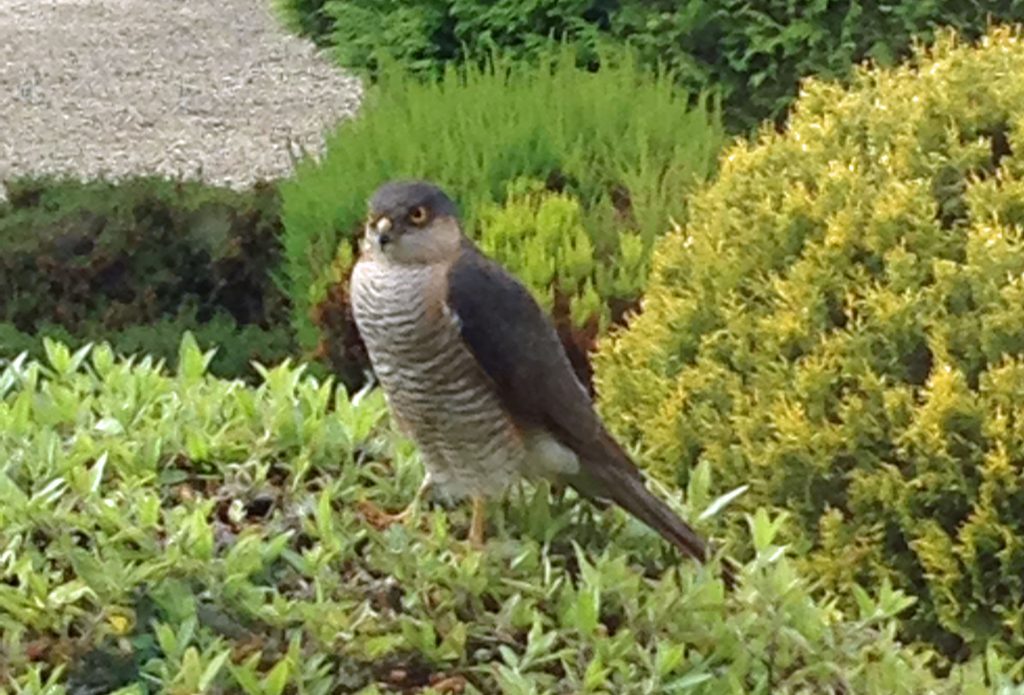
A large hedgehog has been seen in the courtyard and scats left in the garden testify to the presence of foxes and maybe badgers – once a large fox was seen passing through the courtyard and then running off down the garden with something large in its jaws – a squirrel perhaps. Apart from bats, no other mammals have been spotted, but there is clear evidence of them in the grass of the main garden. Mole hills have appeared on a few occasions, but the moles have not taken up residence – as yet. However, all over the garden are rows and clusters of small round holes, which from the flattened grass around them are very much occupied. Voles.
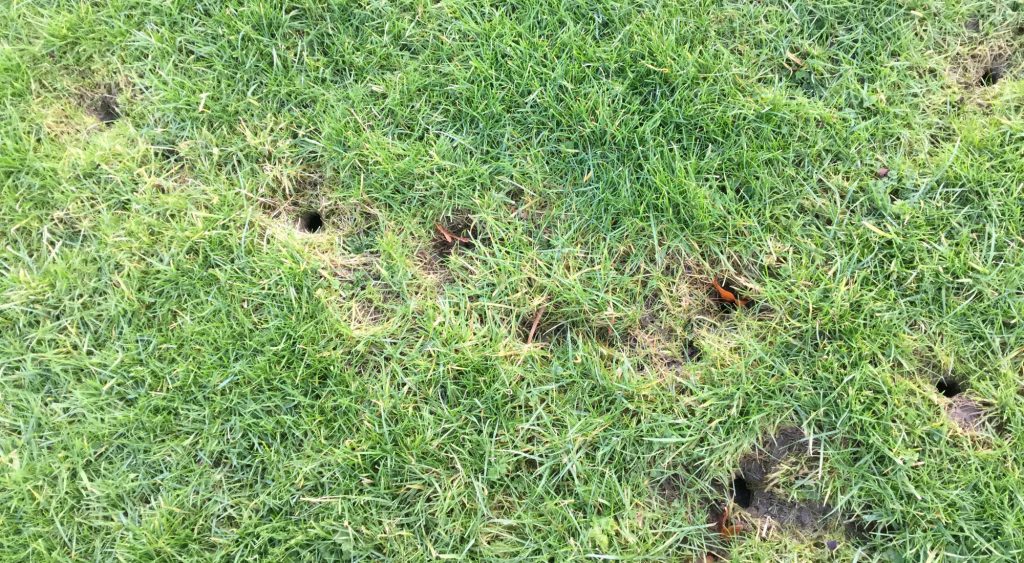
At least, from my online research, I assume it is voles, though despite sitting quietly in the garden at dusk, I haven’t seen a single one. It seems likely that the voles have colonised old mole tunnels. When it has been very wet many of the holes appear to be full of water, but remain in use. My research tells me that voles can eat the bark of shrubs, killing young plants, but they don’t seem to have attacked any of the trees or hedging we have planted – thankfully.
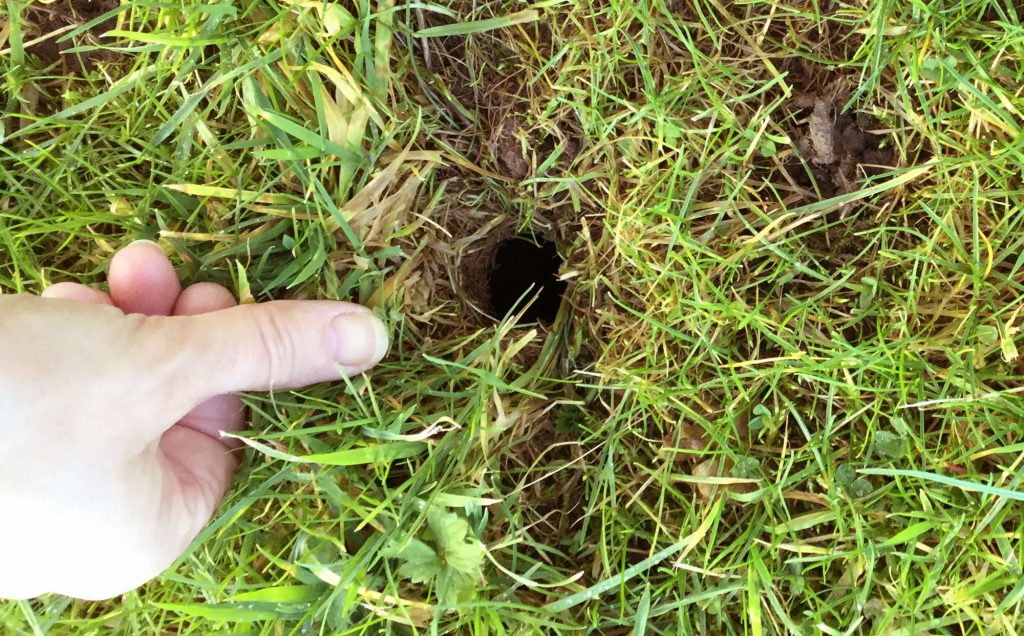
Last summer, we left large areas of the grass to grow long, which looked lovely swaying in the breeze, but I suspect created an ideal habitat for voles. This year we will keep the grass cut, and hope that the voles decide to move elsewhere. However, I like to think that the voles provide food for the barn owl which I have been fortunate to see on two occasions at twilight.
